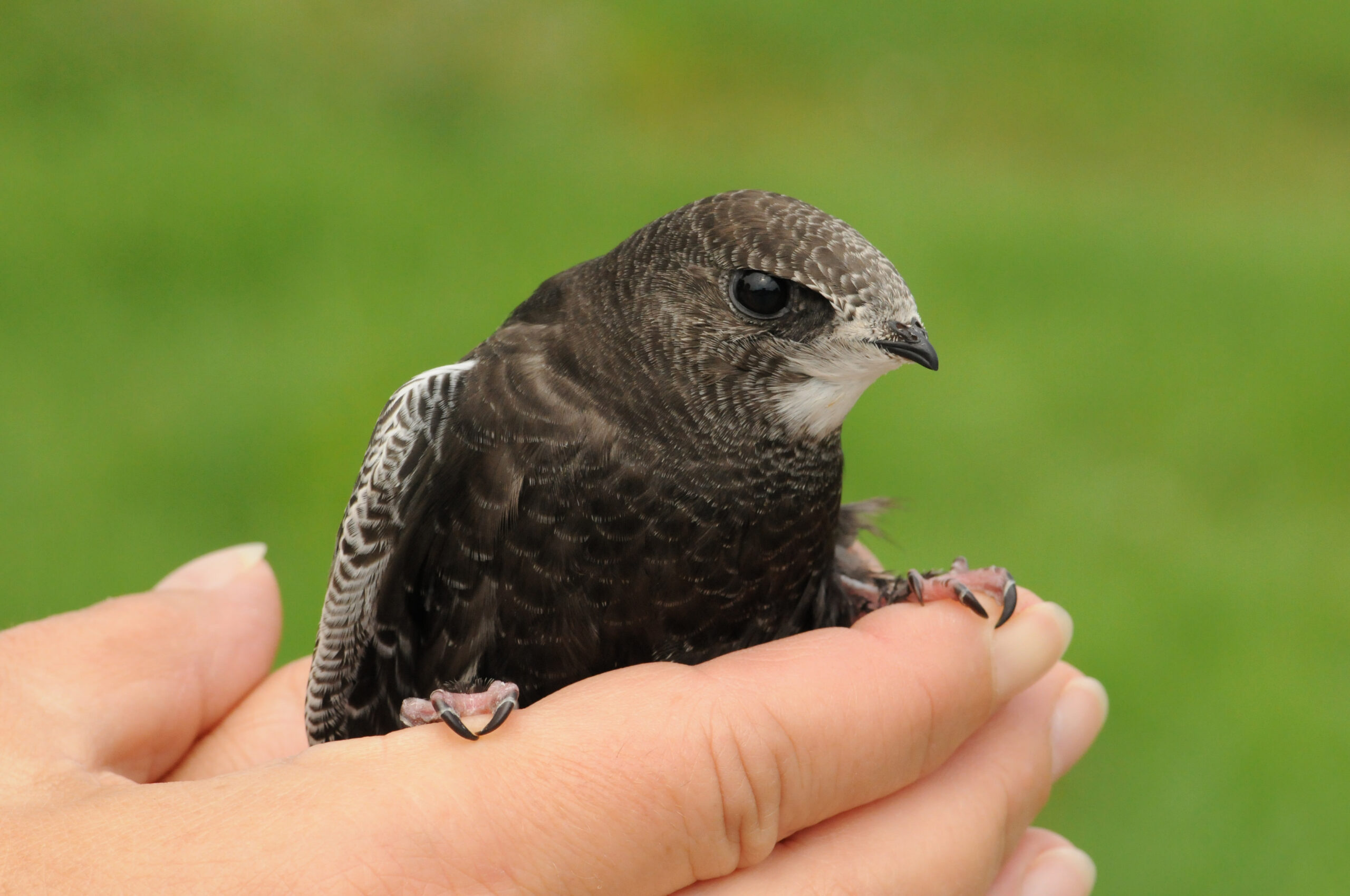What are swifts?
Swifts are fascinating migratory insectivores, built for serious speed and stamina. Swifts spend at least ten months of the year flying non-stop. They eat, bathe, mate and even sleep on the wing! In fact, young swifts can spend the first three years of their life flying non-stop before finally landing to nest for the first time. This is what makes swifts so unique amongst our migratory birds, and these amazing fliers diverged from other bird species around the same time Tyrannosaurus Rex died out, 65 million years ago!
The winters are spent feeding in the skies over Africa and they may travel as far south as Malawi. Swifts the make the 6,000-mile journey back to our shores in early May, returning to their birthplace to raise their own chicks. Swifts pair for life, meeting up each spring at the same nest site. Their return is hailed as the start of summer and in some local folklore, swifts are seen as a symbol of hope.
Sadly, swift numbers are in worrying decline and they are now of Amber Conservation Status. There are several considerations of why this might be, such as their food source of protein-rich insects are also under threat. On top of pesticides, droughts and flooding, insect food is becoming scarcer. Extreme weather changes can also impact the swifts migratory route. In April 2020, thousands of swifts were found dead or gravely injured across Greece, presumably blown off-course by strong winds.
“Swifts are in trouble. The UK has seen numbers plummeting, with a 53% decline between 1995 and 2016” – RSPB
What we can confirm through scientific research is that the loss of suitable nesting sites are causing swift populations to decline. Swifts are crevice-loving species that nest under the eaves or roof tiles of buildings. Building demolition and roof renovation have the unintentional consequence of swift nests being destroyed. It is a bittersweet situation whereby roofs, when being insulated to reduce heat and carbon loss, end up impacting the swift population. Similarly, new building designs have no small gaps to allow swifts in.
However, there is a way we can work with nature. There are plenty of success stories to show that roof renovation can happen alongside protecting nests.
Whether you’re building a new development or insulating/renovating a roof, we are standing with the RSPB and calling on roofers, builders and everyone across the construction industry to give swifts a hand – while you’re up there.
How can I help swifts?
Nesting Boxes:
You can help by providing alternative nesting sites for swifts, such as nest boxes around the eaves of your home. You can purchase nest boxes for swifts from the RSBP, alternatively, you can make your own swift nest box.
Swift Brick:
For new builds, you could even consider a swift brick which provides a mechanism for building nesting accommodation for swifts into the brickwork of new buildings and extensions. The bricks typical encroach or span the cavity wall and should be placed under eaves or fascia boards to provide additional shelter.
Soffits and bargeboards:
Where buildings have wide eaves and timber or Upvc “boxed” (i.e. internally separated from the roofspace) soffits, easy to drill into, you do not need to install separate nest boxes. Just drill 28 x 65mm holes in the soffit between the internal timber supports, and you create a Swift nest! Drilling holes into your soffits is a great way to provide sheltered space for swifts. This gives swifts access to dry nests for the longevity of your roof.
Do you have swifts already?
If there is a swift nest on-site, we strongly recommend that you don’t undertake any building work during the breeding season (late April – early August) to ensure that our feathered friends have the best chance of raising their chicks and being able to make the journey back to Africa. As recommended by Swift Conservation.
- Leave existing nest places undisturbed – don’t interfere and make sure that your builders don’t either.
- If re-roofing or replacing soffits & bargeboards, make new access holes to match the old ones exactly.
- It is far better to create internal nest spaces than external ones, as the former have longevity built-in
- If you cannot do “3 ” above, fit external nest boxes, though these may lack the longevity of the alternatives
If you fear water ingress at an existing swift site, you can use the mortar above a nest to fit a slate tile and create shelter. Though, this must only be done when your swifts are in Africa.
Swifts are incredible birds, capable of traversing mind-boggling distances and have shared our buildings since before the Romans invaded our shores. Unless we start building with nature in mind and providing safe, habitable spaces for our migratory birds, we may eventually see them disappear from our skies, forever.
We are proud to help the RSPB spread awareness of their swift sanctuary project and we will do our part in providing habitats for swifts. For more information on the protection and conservation of swifts, visit the RSPB site.



